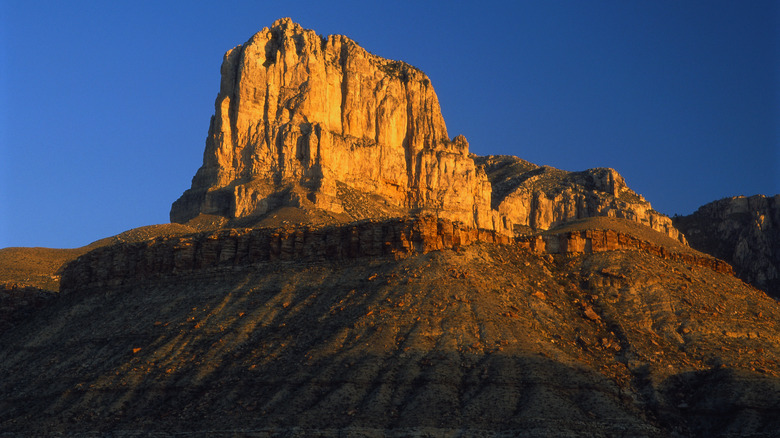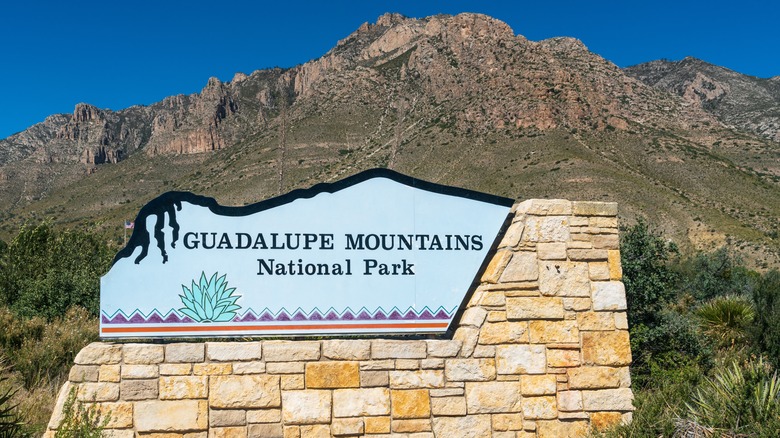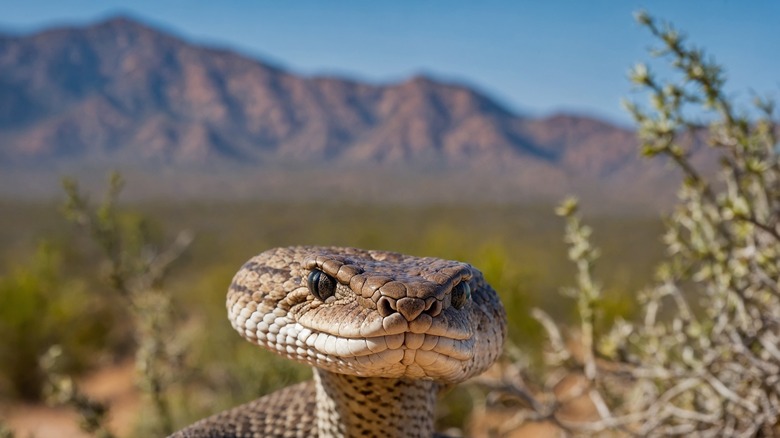Stay Cautious When Hiking This Texas National Park's Perilous Trail
Tucked in the far western corner of Texas, just beneath the New Mexico border, Guadalupe Mountains National Park encompasses some 86,000 acres of its namesake mountain range. Although it is somewhat obscure and not nearly as heavily visited as many other national parks, Guadalupe Mountains National Park is considered a hiker's utopia. USA Today goes so far as to refer to it a national treasure due to its uniqueness. This is largely due to the diverse and striking natural features, including a 1,000-foot-tall limestone cliff called El Capitan and a fossilized reef system. The park also features the four highest peaks in Texas, including Guadalupe Peak, the state's highest point which holds a stainless steel pyramid atop its peak.
The other signatures of Guadalupe Mountains National Park are its remoteness and wildlife. While the seclusion, wild creatures, and low number of park visitors adds a sense of solitude and adventure to excursions in GMNP, it also adds a bit of peril to the journey. For starters, there are no gas stations for at least 35 miles from the park. The nearest town of any with a full complement of stores and services is 60 miles away. So, be sure to fill up with gas at the last stop on the way to the park and don't leave behind any essential gear when packing for your hike. However, even if you have plenty of gas and gear, there are still reasons to stay cautious when hiking this Texas national park's perilous trails.
Rugged terrain and conditions make for a challenging hike
Much of the area in the Guadalupe Mountains National Park is not only at high elevation, it is also steep, rocky, and covered in cactus and other thorny plants. So, hikers and backpackers should be sure to wear appropriate footwear, pack an emergency supply kit, stick to the trails, and avoid grabbing any plants along the way. As an aside, it is important to note that technical rock climbing is strictly prohibited throughout the park. Nonetheless, even those hiking along the trails are subject to slips, falls, and thorny plants.
Beyond the challenging physical features within the park, the Guadalupe Mountains are also in a very dry, hot part of the country. As a result, dehydration, heat exhaustion, and heat stroke are very real threats faced by hikers, especially during the summer months. Heat isn't the only factor hikers face. The weather in the mountains can be unpredictable, so hikers should check the forecast regularly before heading out. The National Park Service also strongly advises hikers to be aware of the suggested time each trail takes to complete, get an early start if possible, and carry your hiking essentials — which includes plenty of water and sunscreen. It is also advised to let others know your hiking plans and hike with a partner or group. If you do plan a solo hike, be sure to take extra precautions and alert others to your hiking route and planned timeline
Wildlife to beware of when hiking Guadalupe Peak
The Guadalupe Mountains are home to a diverse array of animals. The variety of wildlife is one of the biggest draws for visitors, but also represents one of the biggest threats for hikers. Among the creatures the NPS advises hikers and backpackers to beware of when adventuring in the Guadalupe Mountains National Park are black bears, mountain lions, rattlesnakes, javelinas, and coyotes. The region is home to a half-dozen rattlesnake species and these snakes are extremely common in the park. Before hitting the trail, hikers should know what to do if they encounter a rattlesnake. Given the remoteness of the park's trails, it is also crucial to know what to do if bitten by a rattlesnake while exploring.
When it comes to mammals within the park, one of the best things hikers can do is make noise to avoid bears and other animals while moving along the trails. Carrying and knowing how to use bear spray is also wise in the event a bear is encountered. Like bears, cougars also will typically move off if they hear hikers coming. However, it is still imperative to not only know what to do if you see a mountain lion, but also detect warning signs that a mountain lion is nearby. Whether it's dangerous mammals or reptiles, the biggest keys to ensuring a safe hike are to be observant, stay a safe distance away from and never try to handle any animals you encounter.


